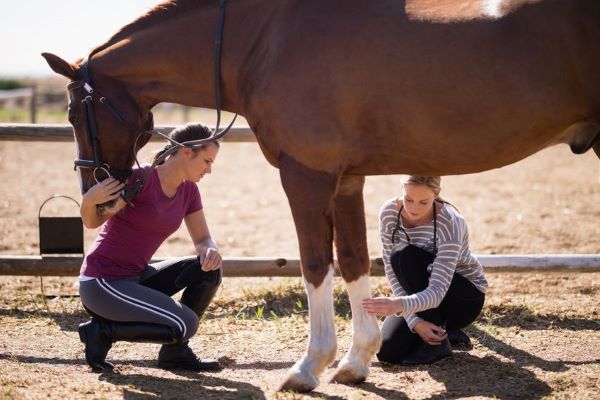BEVA primary care clinical guidelines: Wound management in the horse

Requires membership/payment
This article can be accessed via RCVS Knowledge Library Membership (click here).
In our edition of: Aug 2020
In our categories of: equine
our summary:
Freeman, S.L. et al. (2020) BEVA primary care clinical guidelines: Wound management in the horse. Equine Veterinary Journal
These clinical guidelines aimed to provide evidence-based recommendations on wound management in horses.
Panel members were asked to nominate clinical questions which were then voted on by the panel. The top-ranking questions were then developed using the PICO framework and systematic searches for veterinary literature carried out on CAB Abstracts and Medline, using a common search strategy adapted for each individual question. In addition, a search for evidence summaries was carried out in VetSRev (an online database of citations for systematic reviews of relevance to veterinary medicine) and Veterinary Evidence. A search for human evidence summaries was carried out in the Cochrane, NICE and JBI databases.
Recommendations drawn from the findings for each of the selected clinical questions were then circulated to members of the panel for feedback and agreement. Veterinary evidence was only available for six topics and the quality of this evidence was low, therefore the majority of recommendations are based on human literature.
In the final guidelines, the 13 selected questions were grouped into the following three categories:
- Wound lavage and topical treatments
- Wound debridement and closure
- Therapeutics for wound healing
Recommendations include:
- clean tap water can be considered instead of saline for lavage
- use of povidone-iodine lavage may be beneficial for contaminated wounds
- lavage pressure of 13 psi is effective at reducing infection and inflammation
- debridement pads should be considered for mechanical debridement of wounds
- larvaedebridement can assist with debridement of wounds that are chronic/difficult to access
- topical application of honey may reduce the duration wound healing for some wounds
- there is currently insufficient evidence on the effects of therapeutic ultrasound and laser therapy.
These guidelines provide primary care practitioners with summaries of current veterinary and human evidence and give recommendations for a range of common scenarios relating to the management of wounds in horses. There are limited veterinary studies in this area, and where available they are of low quality, so further research is encouraged.
Although wounds present the second most common emergency in horses, the current evidence-based treatment options are limited.
Image copyright attribute: Wavebreak Media Ltd
Join the discussion
We encourage discussion on all material highlighted in each edition of inFOCUS. Use the button below to join the conversation on Twitter and include your comment in the feed for this issue.



Connect with us